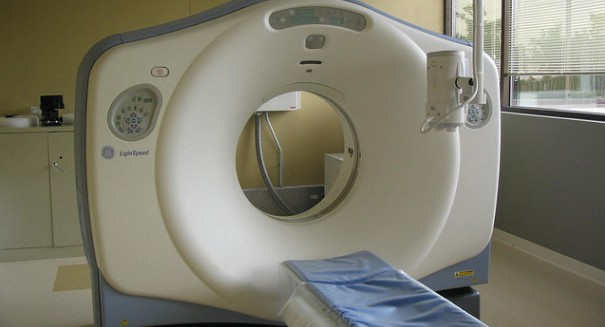
A CT scan combines a series of x-ray views from numerous angles and applies computer processing.
A computed tomography scan, also known as a CT scan, uses x-rays to create images of cross-sections of the human body, reports Medline Plus. However, the CT scan is moving out the medical arena and finding new uses in other disciplines. According to the U.S. News & World Report, a CT scan was used on a wooden beam that could be part of a 300-year-old shipwreck.
The beam was found by historian Steve Libert’s dive team, who has been trying to locate the wreckage site of the Griffin, which was commanded by the French explorer La Salle. In 1679, the ship set sail from an island near Green Bay in Lake Michigan. The ship, its crew of six, and a cargo of furs disappeared. Libert, who is also a diver, has spent decades searching for this shipwreck.
Libert’s team found the timber in June, which holds promise though they were disappointed that it was not part of the ship itself. Earlier this year, Yahoo News reported that Libert was running out of time for his search. The research team had spent nearly a week searching the bottom of Lake Michigan, but had come up empty handed and the permit from the Michigan State Department of Natural Resources was set to expire. They found a beam protruding from the bottom of the lake bed, which has led to the current testing.
According to the Mayo Clinic, a CT scan combines a series of x-ray views from numerous angles and applies computer processing. The result is a three-dimensional visualization that can be likened to examining a loaf of bread through its individual slices. In medicine, the CT scan is used for examining internal injuries and can be used for all parts of the body. Though known for its medical purposes, the CT scan can be used for non-medical reasons, reports the U.S. Department of Energy. For example, it can identify the presence of natural resources and assist in their excavation. The CT scan can also be used to examine fresh fruits and vegetables, enhancing their quality and providing a non-destructive means of testing. Finally, it can be used in industrial settings for evaluation, helping to identify flaws without jeopardizing workers’ safety.
In addition to the CT scan, Libert has enlisted the help of an expert in dendrochronology. The CT scan will be used to identify the ring pattern in the wood. Dendrochronology is a scientific method for dating trees using ring patters. With the images and the expert knowledge, they may be able to determine whether the beam came from La Salle’s time.
Leave a Reply